Archive
Cleaning & Repairing a Commodore PET 2001-8C
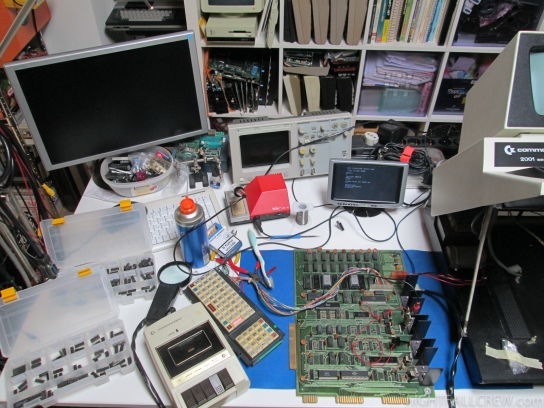
This gallery shows some stages of repairing the Commodore PET 2001-8C
Two months have passed since i have received my Commodore PET 2001-8 Chicklet exchanged for a Sharp MZ-80K, was the day 28/08/2013.
The motherboard was in disastrous conditions, it took two months and a lot of patience to repair it.
Defect:
- Garbled characters at boot.
- Tape Recorder (Datassette) Motor Tired.
Replaced parts and various repairs:
A large number of short circuits visible and not visible (under the ic sockets)
- 2 x 6540 ROM Basic 1.0
- 2 x 74LS00
- 3 x 74LS157
- 1 x 7805
- 2 x Electrolytic Capacitor / Tantalum.
- 1 x Tape Motor
- 16 x 2114 RAM
I want to dwell on the ram, i noticed that the PET 2001-8 Chicklet does not digest very well all ram.
These ram don’t work properly for my PET 2001-8 Chicklet:
- TESLA 2114 (2/8)
- MM2214N
- SY2114-2
- HKE2114L-2
I had to buy several stocks of ram in 2114 to find the right ram that work correctly. The ram that work very well are the ELCAP 2114L-3.
I have to thank Andrea Pierdomenico for the ROM test on his PET 2001-8C and Alessandro Polito. for the exchange.
Repairing a Commodore CBM 610
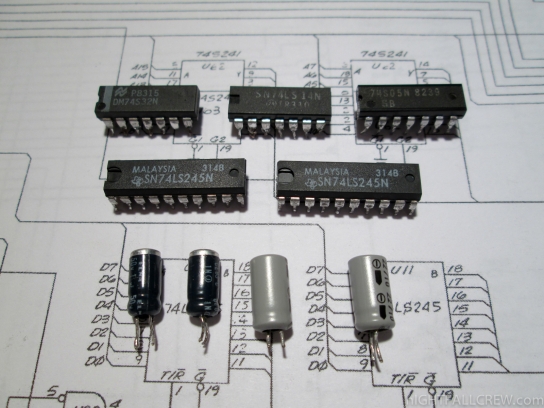
This gallery shows some stages of repairing the Commodore CBM 610.
Defects found on the Commodore CBM 610:
- Random raster lines on the screen.
Components replaced:
- 2 x 74LS245
- 1 x 74S32
- 1 x 74S05
- 1 X 74LS14
- 2 x Capacitor 22uf 10v
- 2 x Capacitor 1uf 50v
I have passed three weeks of suffering for repairing this CBM 610. The finding of the fault is not has been easy, the key component of the failure was the IC 74S05 (U96) followed by the other components.
Sharp X68000 Personal Computer CZ-662C-GY (Boxed)
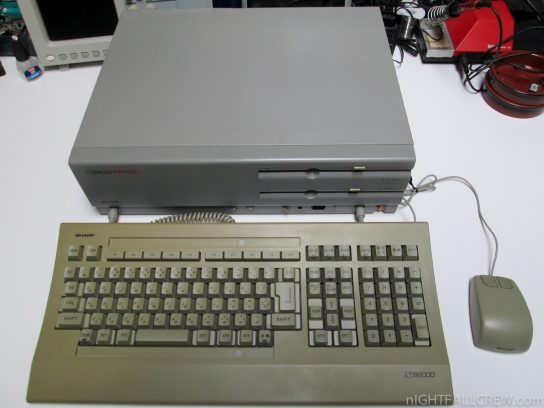
Autopsy:
This computer/console in good cosmetic condition is arrived for a repair from a friend a few weeks ago. The defect is The Black Screen of Death, the computer turns on but doesn’t turn off, the standby LED remains faint green.
Unfortunately after several hours spent to trying the fault and i have tried just everything, the computer is still dead, my suspicion falls on the Custom Chip “SCOTCH” IX 1267CE from Sharp.
Components that have been tested and replaced:
- Tested all capacitors.
- Tested all transistors.
- Tested all SMD fuses.
- Test all the Coils.
- Tested all voltages.
- Replaced 74LS08 ic that controls the logic of power on/standby.
- Replaced 74LS244 ic that controls the logic of power on/standby.
- Replaced the power supply.
 Download: Sharp X68000 Schematics (1684)
Download: Sharp X68000 Schematics (1684)
from Wikipedia:
The Sharp X68000, often referred to as the X68k, is a home computer released only in Japan by the Sharp Corporation. The first model was released in 1987, with a 10 MHz Motorola 68000 CPU (hence the name), 1 MB of RAM and no hard drive; the last model was released in 1993 with a 25 MHz Motorola 68030 CPU, 4 MB of RAM and optional 80 MB SCSI hard drive. RAM in these systems is expandable to 12 MB, though most games and applications did not require more than two.
The X68k ran an operating system developed for Sharp by Hudson Soft, called Human68k, which features commands very similar to those in MS-DOS (typed in English). Pre-2.0 versions of the OS had command line output only for common utilities like “format” and “switch”, while later versions included forms-based versions of these utilities, greatly improving their usability. At least three major versions of the OS were released, with several updates in between. Other operating systems available include NetBSD for X68030 and OS-9.
Early models had a GUI called “VS” (Visual Shell); later ones were packaged with SX-WINDOW. A third GUI called Ko-Windows existed; its interface is similar to Motif. These GUI shells could be booted from floppy disk or the system’s hard drive. Most games also booted and ran from floppy disk; some were hard disk installable and others require hard disk installation.
Since the system’s release, Human68k, console, and SX-Window C compiler suites and BIOS ROMs have been released as public domain and are freely available for download.
Early machines use the rare Shugart Associates System Interface (SASI) for the hard disk interface; later versions adopted the industry-standard small computer system interface (SCSI). Per the hardware’s capability, formatted SASI drives can be 10, 20 or 30 MB in size and can be logically partitioned as well. Floppy disks came in a couple of different formats, none of which are natively readable on other platforms, although software exists that can read and write these disks on a DOS or Windows 98 PC.
source: wikipedia
Easy Repair of a Commodore VIC-20 and a C64 for a friend
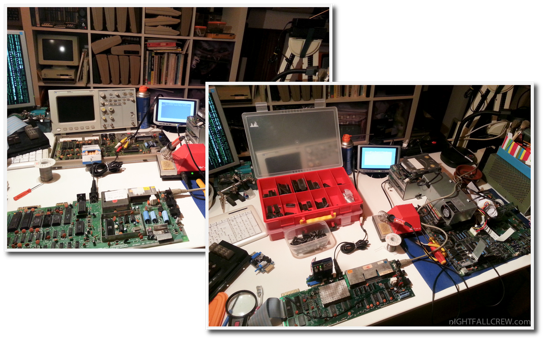
I have received these computers to be repaired for a friend.
Defects found on the Commodore VIC-20:
- Error message (device not present) when trying to access the IEC devices, like a Floppy Drive.
Defects found on the Commodore 64:
- Black screen of death after installing the missing roms.
The repair of the Commodore VIC-20 was made by replacing a HEX Inverter Buffer 7406.
The repair of the Commodore C64 was made by replacing the MOS 906114-01 (PLA – Programmable Logic Array).
Gallery of repairs:
Mentor Colour 6 (Pong clone) has been Repaired
Mentor Colour 6 (Pong clone) has been Repaired
Defects:
- Black screen of death.
- No sound.
The problem of the power supply has been fixed by replacing the transitor CS 9013 that is used in a very bizarre way to lower the voltage from 9v to 6.85v. The problem of the audio was always caused by a transistor CS 9013 brutally in short circuit. In this case, the transistor is used like a amplifier.
The transistor CS 9013 can be replaced with a BC 337 that it’s equivalent.
Repairing & Cleaning a Commodore CBM 610
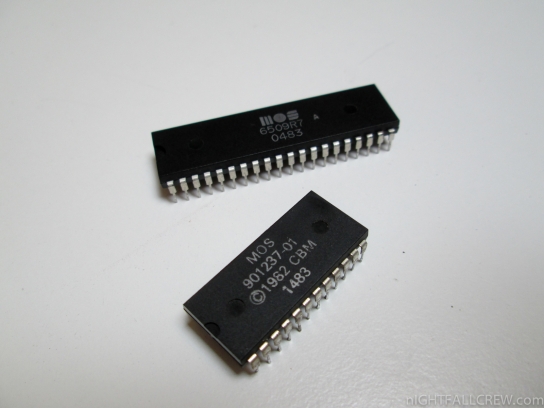
This gallery shows some stages of the cleaning and repairing the Commodore CBM 610.
Defects found on the Commodore CBM 610:
- Black Screen of Death.
- Garbage characters on the screen.
- Keyboard Yellowed.
- Filter capacitor exploded.
The black screen of death was fixed by replacing the CPU MOS 6509A and the problem of garbage characters on the screen was fixed by replacing the ROM characters with a EPROM 2532 suitably programmed.
The yellowed keyboard was replaced with a new one in good condition of the Commodore CBM 710. I like Commodore. What will be the difference of a CBM 710 and a CBM 610 keyboard? nothing, are the same! no! on the keyboard of the CBM 710 has two wires reversed! (brown/red) ;-D
The filter capacitor exploded has been removed.
Analysis & Repair of two Floppy Drives Commodore SFD-1001
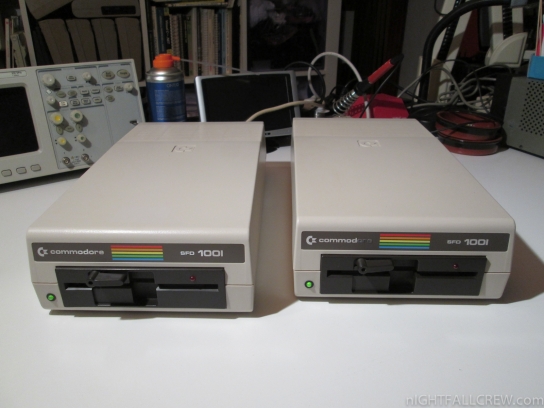
This gallery shows some stages of the repairing of the two Floppy Drives Commodore SFD-1001.
Defects found on the two Floppy Drives:
- Both floppy drives had the capacitors that leaked acid on the motor control pcb.
- Both floppy drives had the closing arm cracked.
The difficulty was rebuild the tracks of the pcb and remove the most of the leaked acid of the capacitors. Unfortunately on the aesthetic level this type of repair are not perfect, but i’m glad that now work.
To test the correct operation of the Floppy Drives i have used a Commodore CBM (PET) 2001, and a Commodore CBM 610.
Commodore P500 (PET/CBM-II) pre-Production Prototype
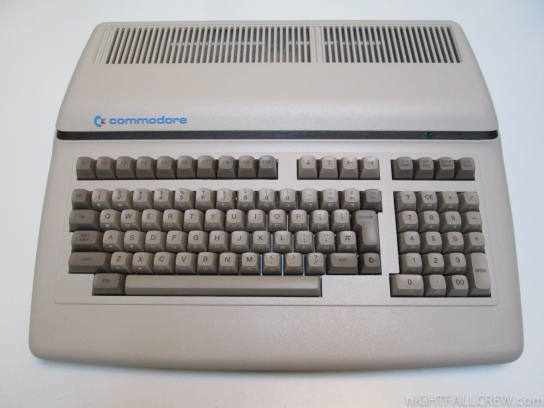
Autopsy:
I have received this computer to be repaired for a friend with a classic startup fault; the Black screen of Death.
After careful analysis of the problem and thanks to Alessandro Polito for the test, the failed component was the CPU 6509.
from Wikipedia:
The Commodore CBM-II series was a short-lived range of 8-bit personal computers from Commodore Business Machines (CBM), released in 1982 and intended as a follow-on to the Commodore PET series.
The CBM-II had two incarnations, the P series (P = personal, or, home use) and the B series (B = business use). The B series was available with a built-in monochrome monitor (hi-profile) with detached keyboard, and also as a single unit with built-in keyboard but no monitor (lo-profile). These machines were known as the “Porsche PETs” for their unique styling.
The P series used the VIC-II 40-column color video chip like the C64. It also included two standard Atari-style joystick ports. The 6509 CPU ran at 1 MHz in the P series due to the use of the VIC-II chip.
The B series used a 6545 CRTC video chip to give an 80-column “green screen” monochrome output more suitable for word processing and other business use than the VIC-II’s 40-column display. Most models have the Motorola 68B45 installed which is a pin compatible variant rather than the MOS 6545A1 2 MHz part. On the B series the 6509 CPU ran at 2 MHz.
Features common to both the P and B series included an MOS Technology 6509 CPU, an enhanced version of the venerable 6502, that was capable of addressing up to 1 megabyte of RAM via bank switching (however, no CBM-II model came with more than 256 kilobytes of RAM, 1/4 megabyte). The sound chip was the 6581 SID, the same one that was used in the popular Commodore 64 (C64) but with some limitations as it was over-clocked to 2 MHz. Additionally, the CBM-II had an industry-standard RS-232 serial interface and an IEEE-488 parallel bus (for use by disk drives and printers) just like the PET/CBM series. The CBM-II’s built-in operating system used an enhanced version of CBM BASIC version 4.0.
An optional Intel 8088-based coprocessor board allowed the CBM-II series to run CP/M-86 1.1 and MS-DOS 1.25; however, the computers were not IBM PC compatible and very little, if any, software taking advantage of this capability ever appeared. The coprocessor board only ran on hi-profile machines due to power supply and mechanical spacing requirements.
The production naming within the United States and Canada was the B128/B256 and CBM128-80/CBM 256-80 while in Europe they were known as the 600 and 700 series respectively (no “B” in front of the model number). The P machine was known worldwide as the 500 series. There are prototype models though such as the B500 (earlier B128 design) and B700 (earlier CBM 128-80/CBM 256-80 design) known to exist.
Due to the popularity of the C64, the P series was cancelled in the United States before it could be officially released; however, a few dealers who received preproduction units sold them. As these computers had not received approval from the Federal Communications Commission, this caused legal problems for Commodore. The units were recalled and destroyed, but a very small number exist today, in private collections. At least one model, the P500, was commercially released in Europe but only sold in small numbers.
source: wikipedia
Repair two Commodore CBM 8296 with Black screen of Death
These two computers had the classic fault: Black screen of Death.
The first one was repaired by replacing a ram chip (4264) partially interrupted, the other one had One of the two chip PLA dead.
I have to thank my friend Andrea for providing me a motherboard of a 8296 for spare parts, where i have recovered the PLA which i needed.
MicroDigital TK-83 – RF (PAL-M) to Composite NTSC
The composite video mod for the computer Microdigital TK-83 unlike the Sinclair ZX81 it’s more easier.
You no need to install the usual transistor with 1 or 2 resistors / capacitor. The transistor is already installed on the motherboard of the Microdigital TK-83, so just pick up the video signal as described in the picture.
I remind you that the output signal will be in NTSC standard for the Microdigital TK-83 produced in Brazil (PAL-M)
Amstrad (Schneider) CPC 464 (German – Grey Keys) + Repair
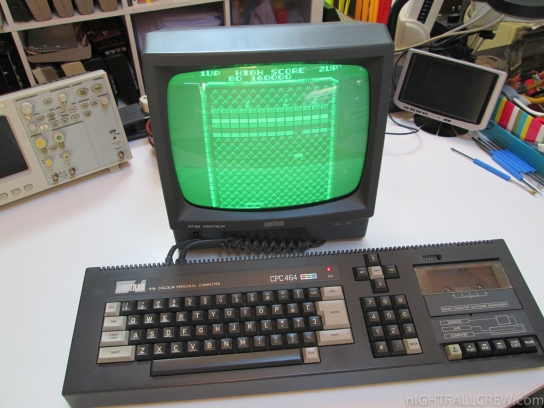
Autopsy:
from Wikipedia:
The Amstrad CPC (short for Colour Personal Computer) is a series of 8-bit home computers produced by Amstrad between 1984 and 1990. It was designed to compete in the mid-1980s home computer market dominated by the Commodore 64 and the Sinclair ZX Spectrum, where it successfully established itself primarily in the United Kingdom, France, Spain, and the German-speaking parts of Europe.
The series spawned a total of six distinct models: The CPC464, CPC664, and CPC6128 were highly successful competitors in the European home computer market. The later plus models, 464plus and 6128plus, efforts to prolong the system’s lifecycle with hardware updates, were considerably less successful, as was the attempt to repackage the plus hardware into a game console as the GX4000.
The CPC models’ hardware is based on the Zilog Z80A CPU, complemented with either 64 or 128 kB of memory. Their computer-in-a-keyboard design prominently features an integrated storage device, either a compact cassette deck or 3″ floppy disk drive. The main units were only sold bundled with a colour or monochrome monitor that doubles as the main unit’s power supply. Additionally, a wide range of first and third party hardware extensions such as external disk drives, printers, and memory extensions, was available.
The CPC series was pitched against other home computers primarily used to play video games and enjoyed a strong supply of game software. The comparatively low price for a complete computer system with dedicated monitor, its high resolution monochrome text and graphic capabilities and the possibility to run CP/M software also rendered the system attractive for business users, which was reflected by a wide selection of application software.
During its lifetime, the CPC series sold approximately three million units.
Replacement/Adaptation of a power switch for Amstrad CPC 464:
source: wikipedia cpcwiki.eu
Eprom Motorola MCM68766C replaces the C64/VIC-20 Rom
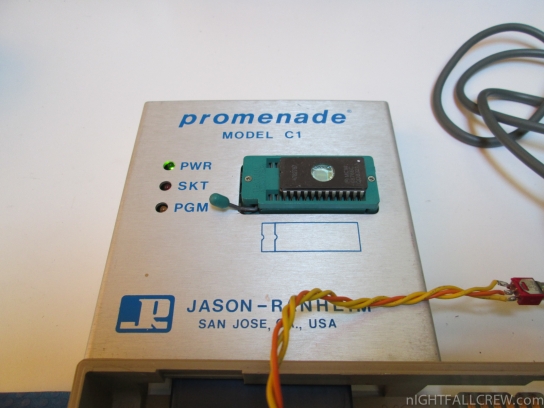
If you are the lucky owners of these eprom: Motorola MCM 68766C you can do something really cute, hardware permitting. Example: use this EPROM like a ROM for some Devices and Computers Commodore without using an adapter ;-D
I had to use the EPROM programmer Promenade C1 for Commodore 64 to burn these eprom because all my programmers don’t support these type of eprom.
Download:
Restoration and Repair of a Sinclair Spectrum 128k +2A Arabic Version
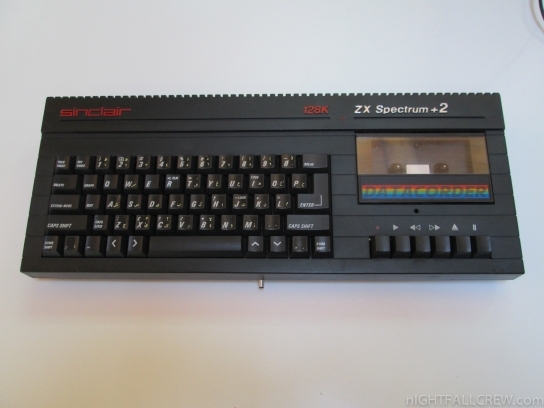
Autopsy:
This is the translation of the Arabic boot screen:
© 1987, 1988 Sinclair of Egypt
presented by Matsico Corp, an authorized dealer of Sinclair & Amstrad in Egypt
prepared by Dr. Nabil Nazmi
(Version 3)The computer is arrived in pitiful condition. The inside of the computer and the keyboard were are full of sand and dirt.
Restoration and repairs that have been made:
- Replaced the top case with a new one.
- Replaced the bottom case with a new one, then replaced again with the old one to keep the original appearance. (the hole for the switch is standard in the Arabic version)
- Replaced the tape recorder.
- Replaced the motherboard with a issue #2 instead of issue #1 (was not convenient the repair)
- Cleaned all keys and membrane.
- Replaced all rusty springs of the keyboard.
- General cleaning.
- Moved the ROM/EPROM mod on the new motherboard.
- Replaced the original switch with a new one, then replaced again with the old one to keep the original appearance.
from Wikipedia:
The ZX Spectrum +2 was Amstrad’s first Spectrum, coming shortly after their purchase of the Spectrum range and “Sinclair” brand in 1986. The machine featured an all-new grey case featuring a spring-loaded keyboard, dual joystick ports, and a built-in cassette recorder dubbed the “Datacorder” (like the Amstrad CPC 464), but was in most respects identical to the ZX Spectrum 128. The main menu screen lacked the Spectrum 128′s “Tape Test” option, and the ROM was altered to account for a new 1986 Amstrad copyright message. These changes resulted in minor incompatibility problems with software that accessed ROM routines at certain addresses. Production costs had been reduced and the retail price dropped to £139–£149.
The new keyboard did not include the BASIC keyword markings that were found on earlier Spectrums, except for the keywords LOAD, CODE and RUN which were useful for loading software. This was not a major issue however, as the +2 boasted a menu system, almost identical to the ZX Spectrum 128, where one could switch between 48k BASIC programming with the keywords, and 128k BASIC programming in which all words (keywords and otherwise) must be typed out in full (although the keywords are still stored internally as one character each). Despite these changes, the layout remained identical to that of the 128. The ZX Spectrum +2 power supply was a grey version of the ZX Spectrum+ and 128 power supply.
The ZX Spectrum +2A was a variant of the Spectrum +3 housed a black version of the Spectrum +2 case mouldings. The Spectrum +2A/+3 motherboard (AMSTRAD part number Z70830) was designed such that it could be assembled without the floppy disk controller or associated logic and a +2 style “datacorder” connected. Originally, Amstrad planned to introduce an additional disk interface for the +2A/+2B called the AMSTRAD SI-1, however this never appeared. If an external disk drive was added, the “+2A” on the system OS menu would change to a +3.
The power supply of the ZX Spectrum +2A used the same pinout as the +3. However, the power supply purchased with the +2A/B had “Sinclair +2″ written on the case.
source: wikipedia
Apple ][ Europlus (Apple II Europlus) Restoration and Repair
![Apple ][ EuroPlus Cleaning](https://www.nightfallcrew.com/wp-content/uploads/2013/07/apple_ii_europlus_cleaning-e1375274282516.png?76c919)


This gallery shows some stages of cleaning the computer Apple ][ Europlus, Apple Disk ][.
I have also made minor repairs which i describe below:
- Replaced the Lamp of the power-on.
- Removing the RIFA filter capacitor (the capacitor was exploded)
- Fixed the center hub of the Apple Disk ][.








































































































































































Recent Comments